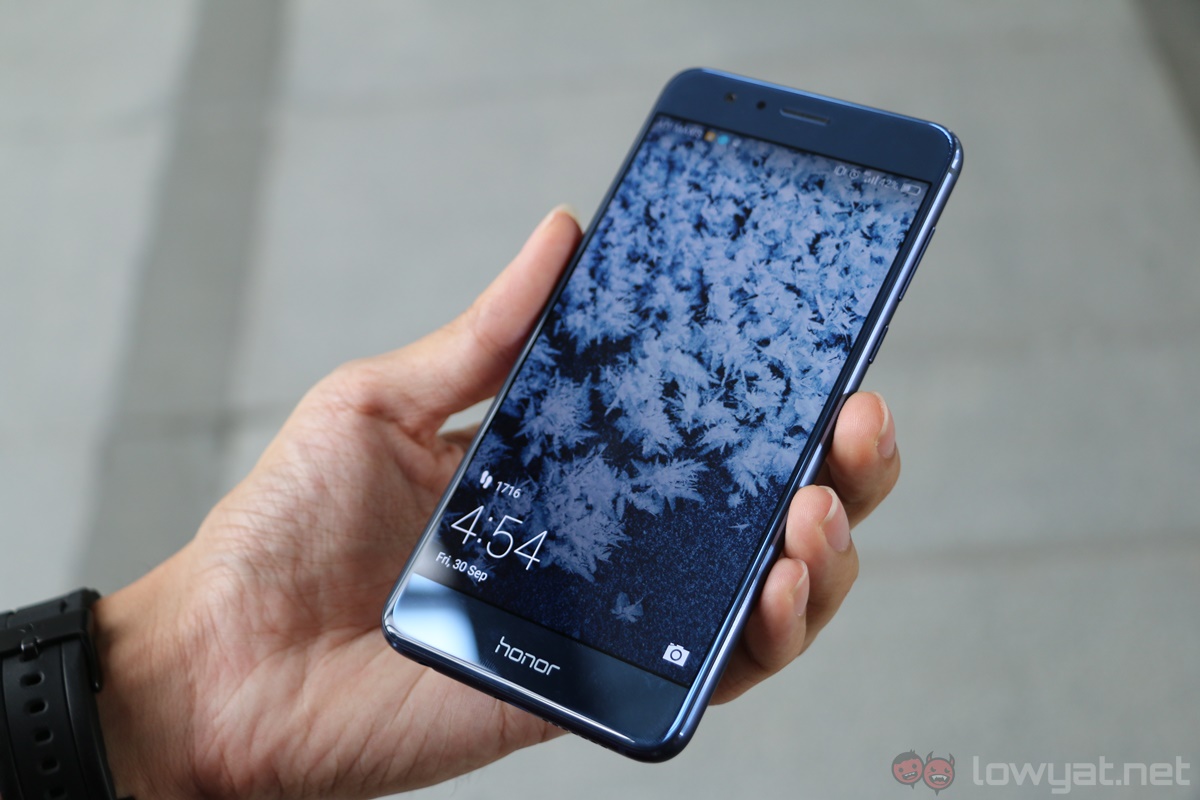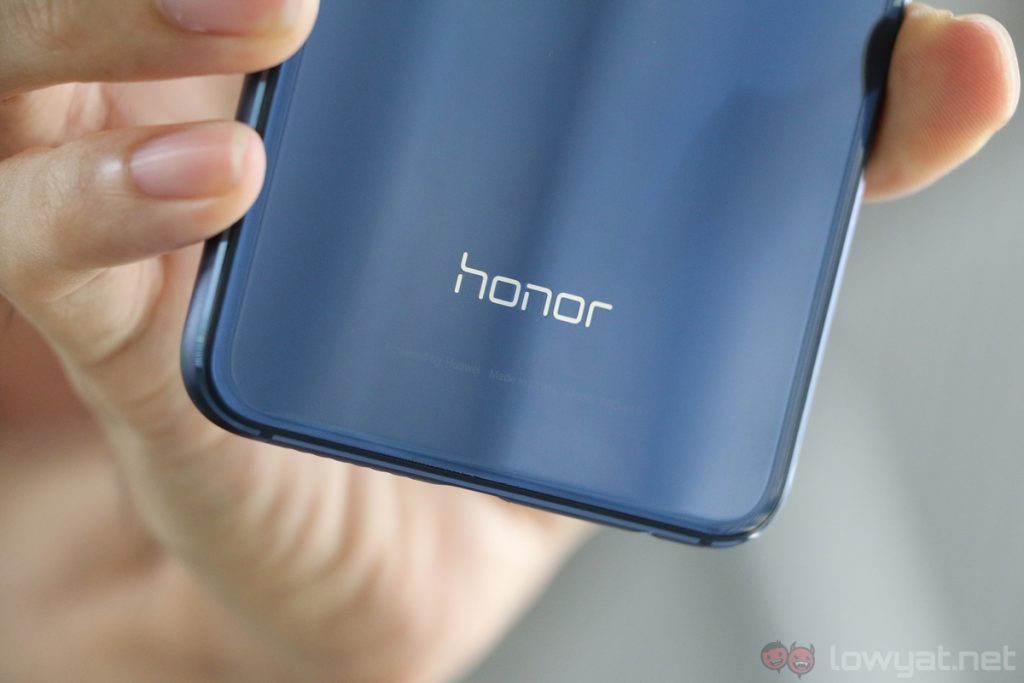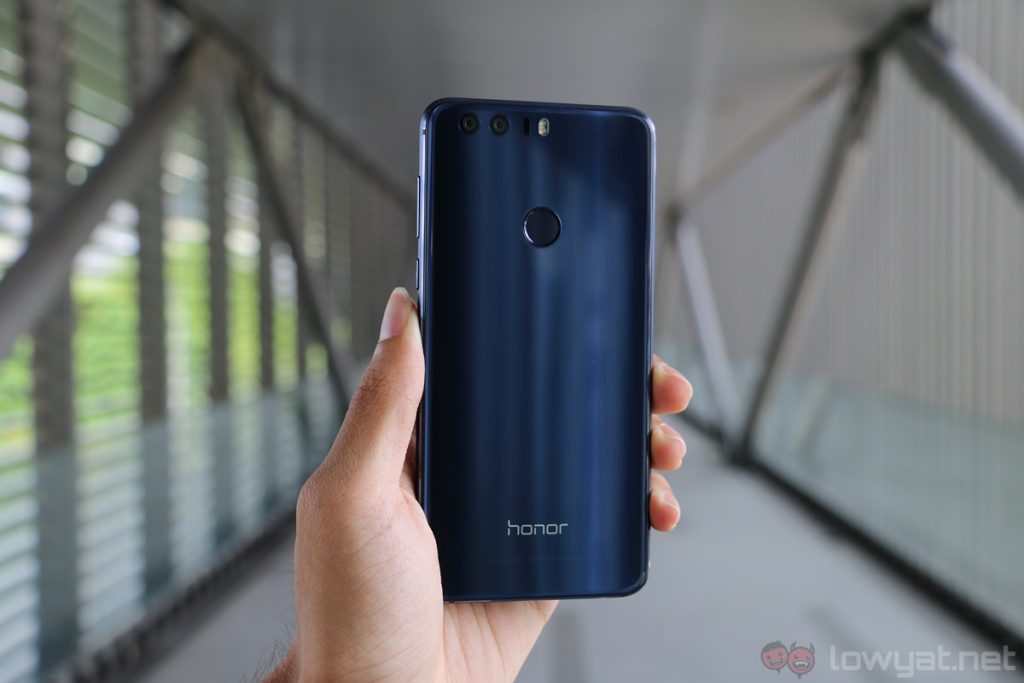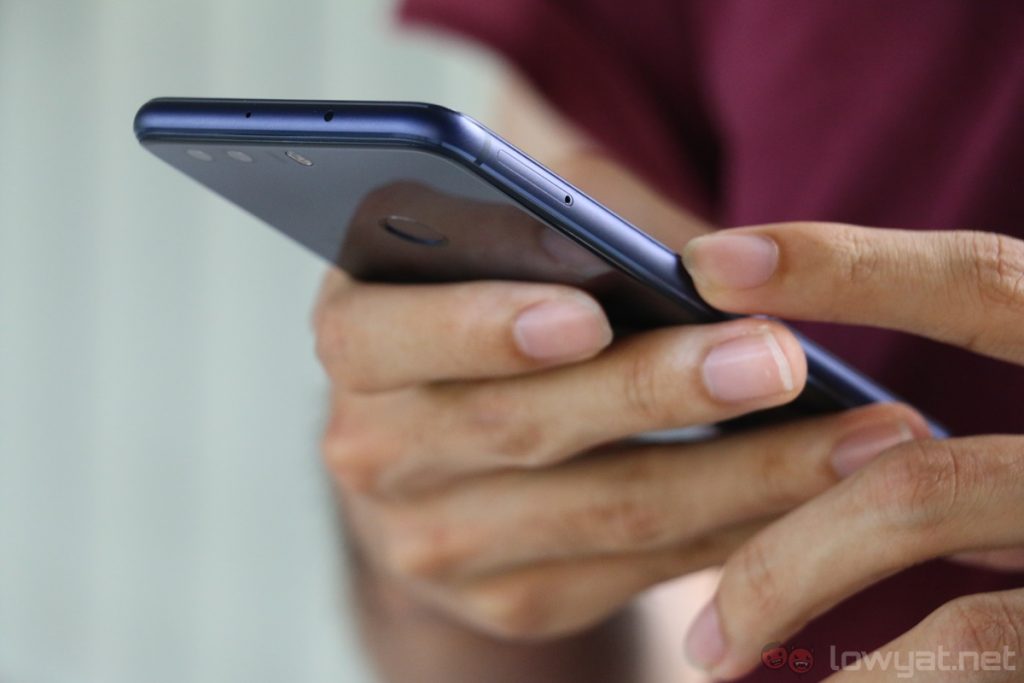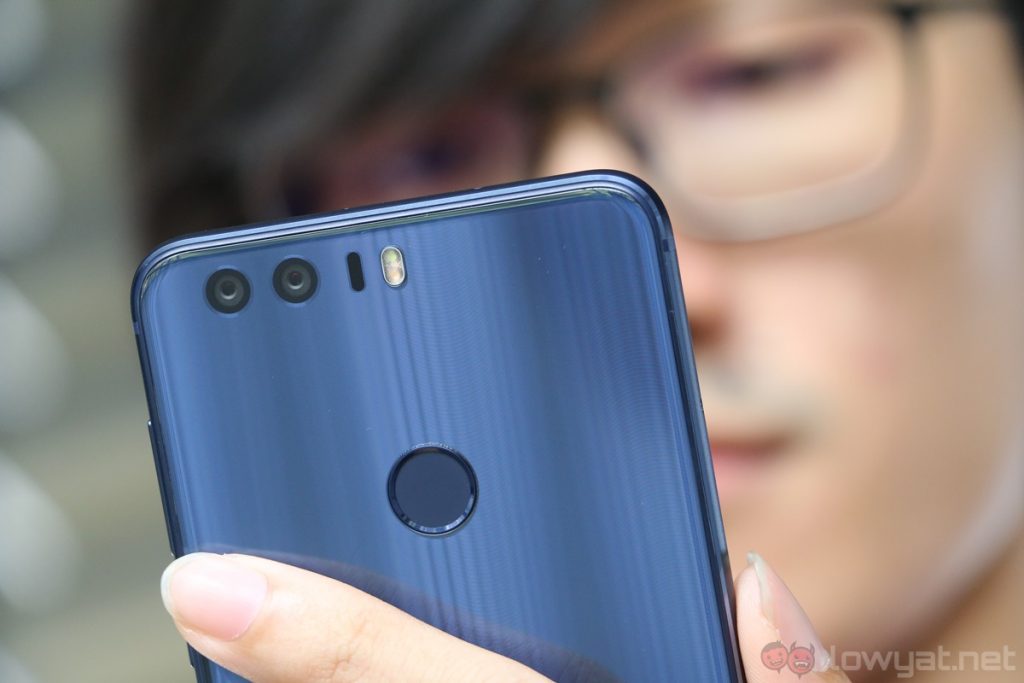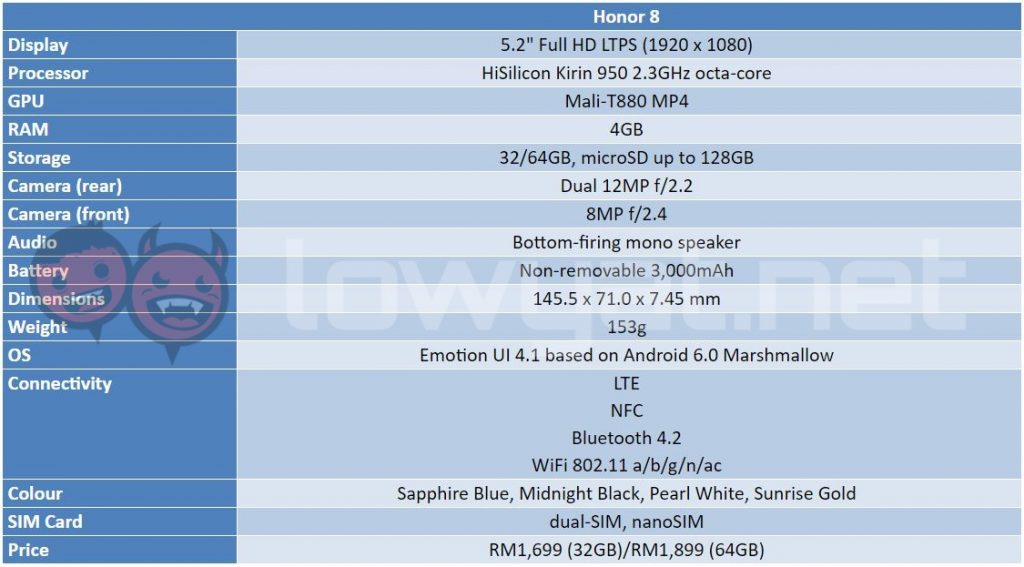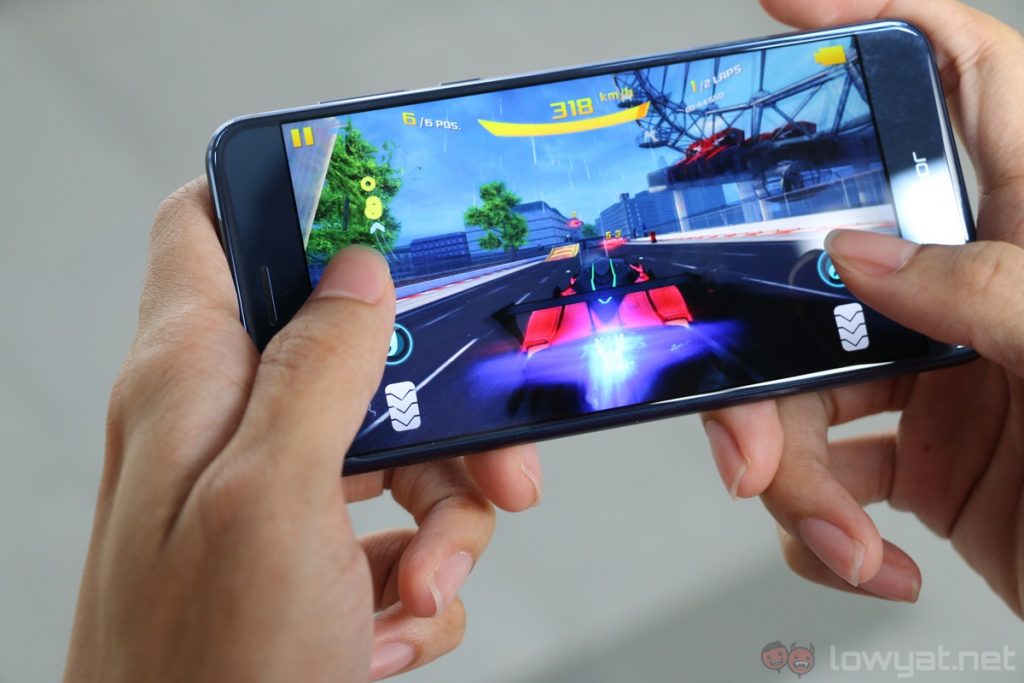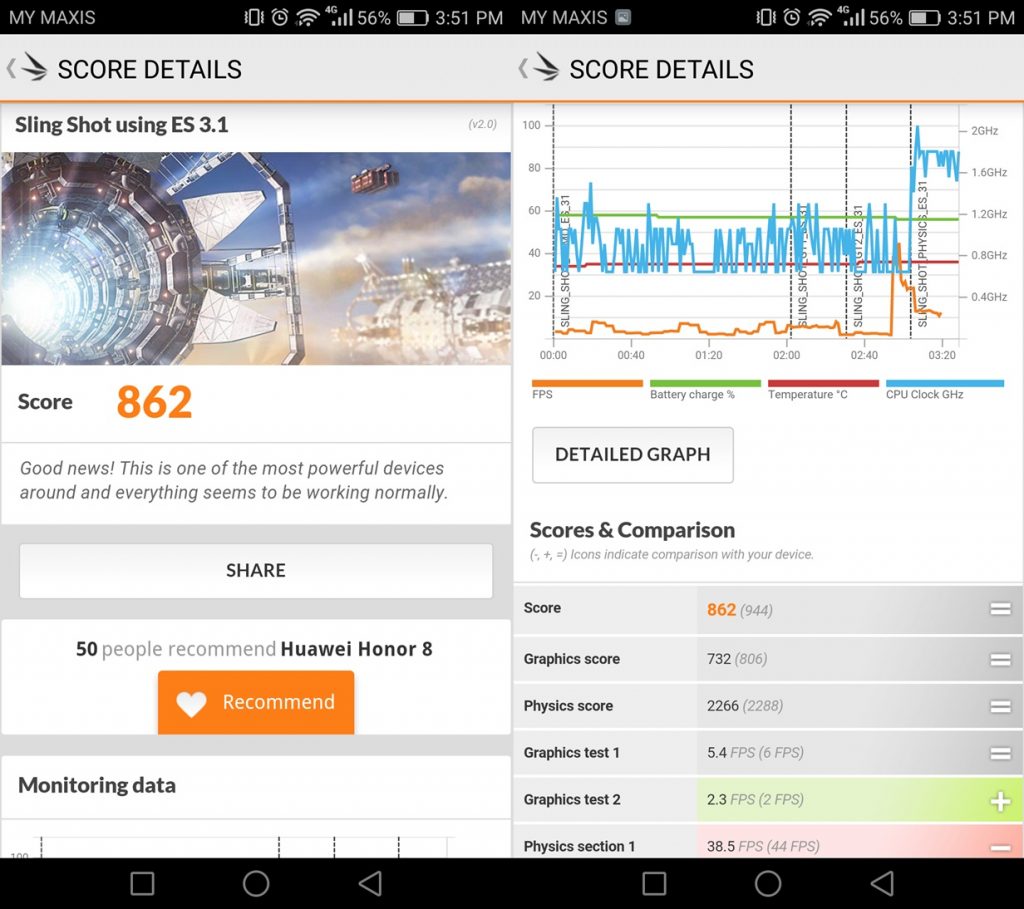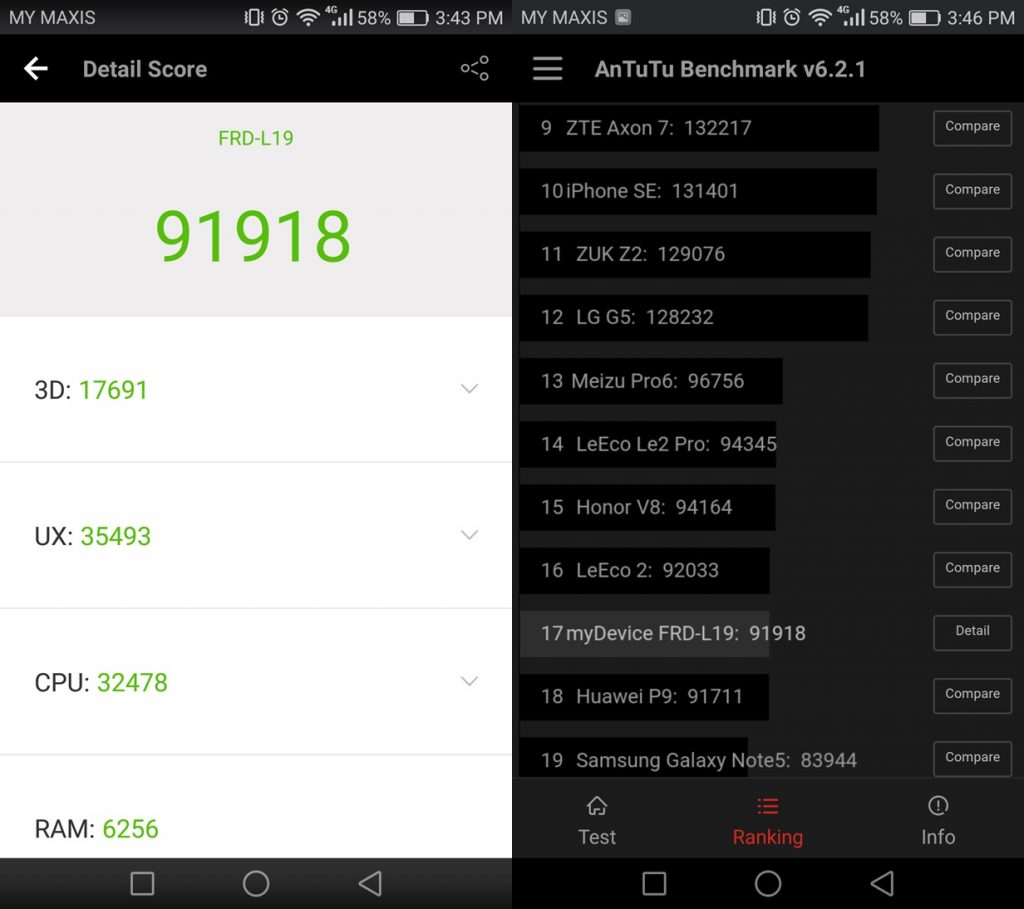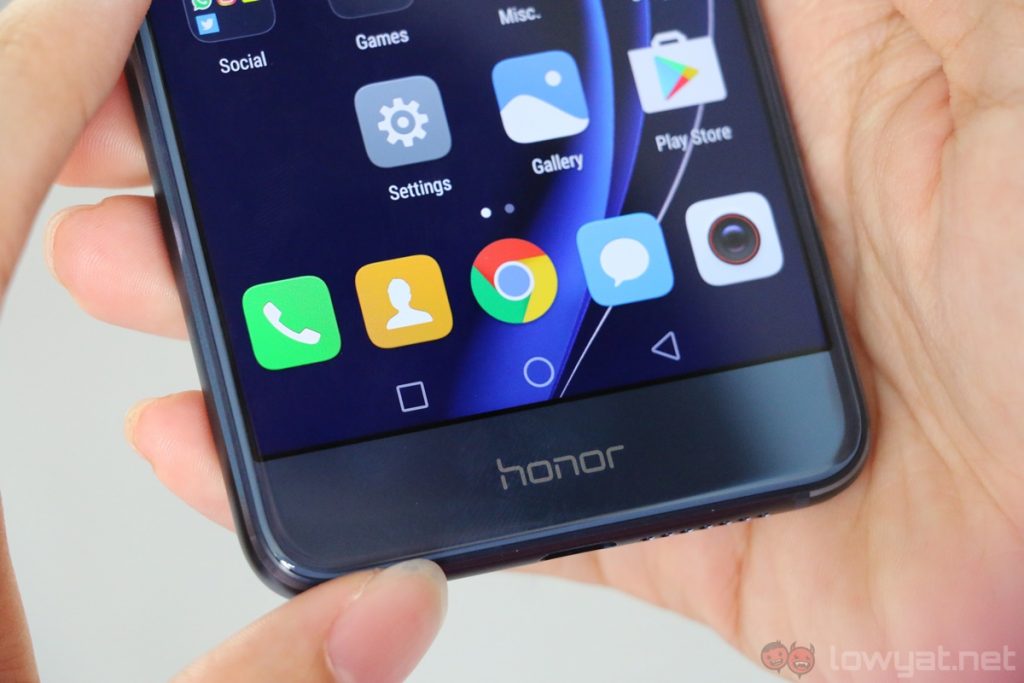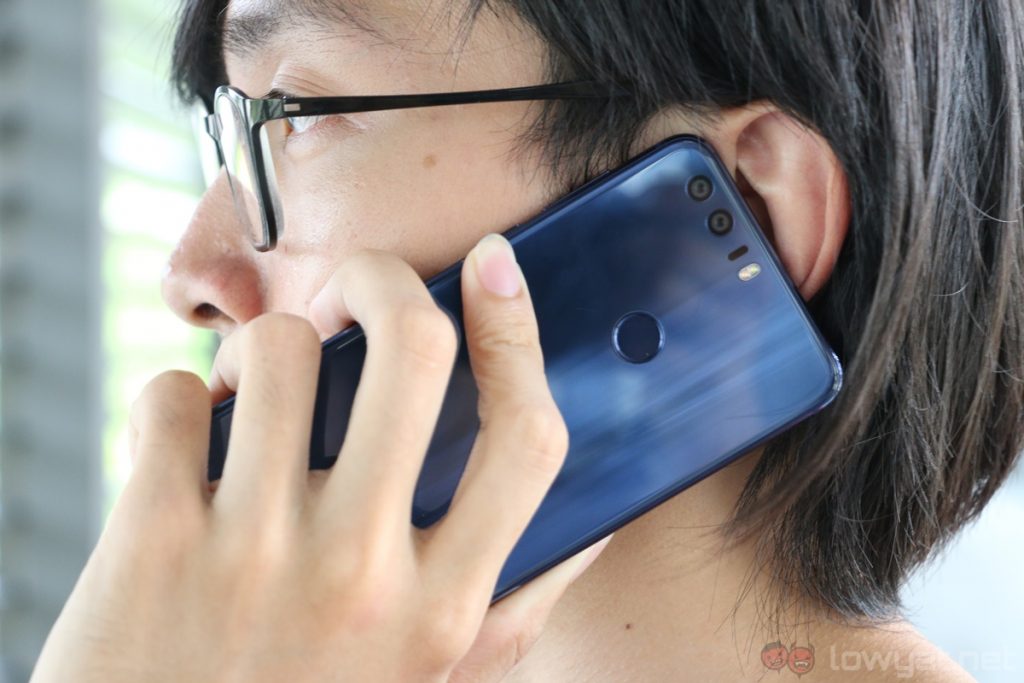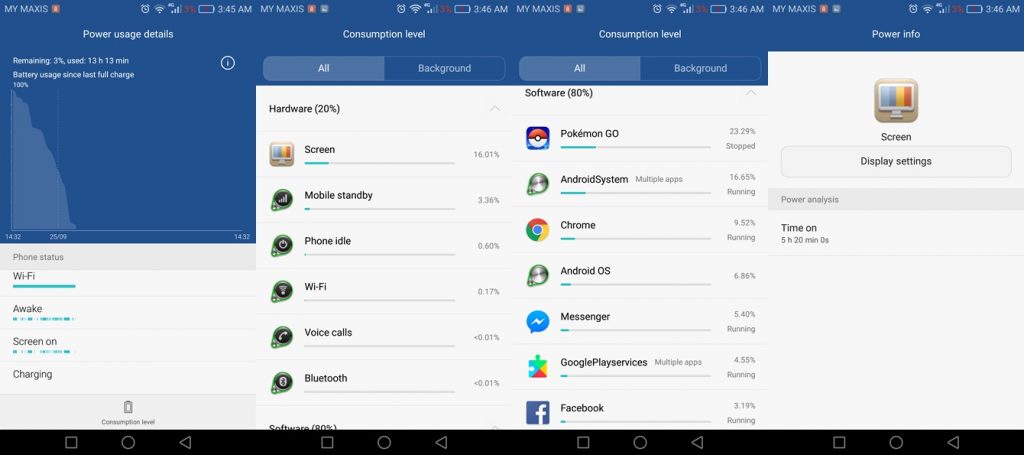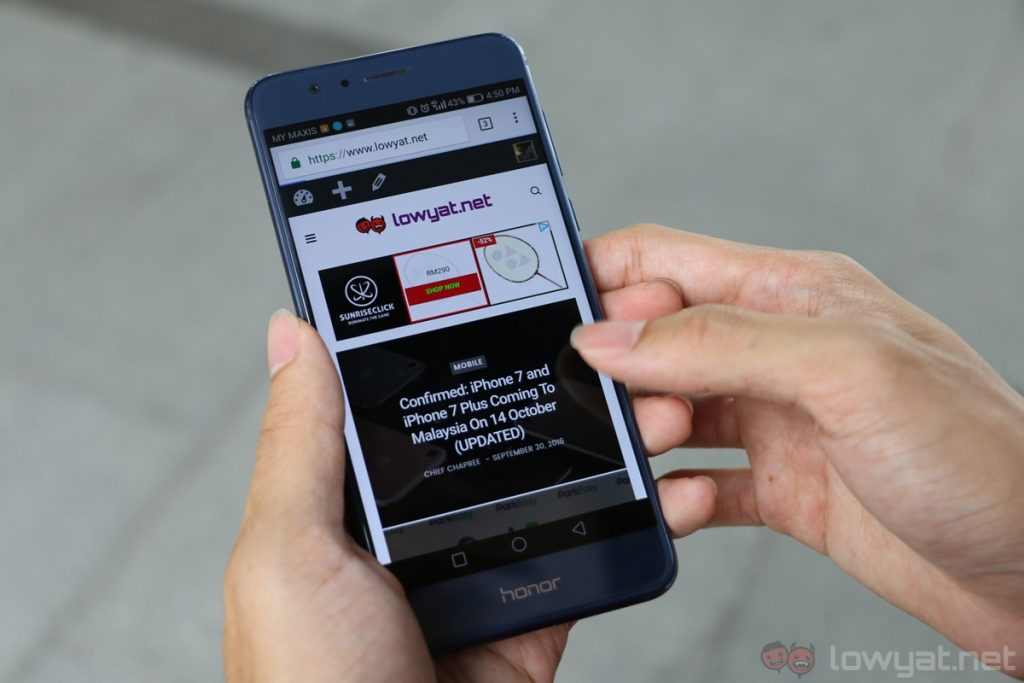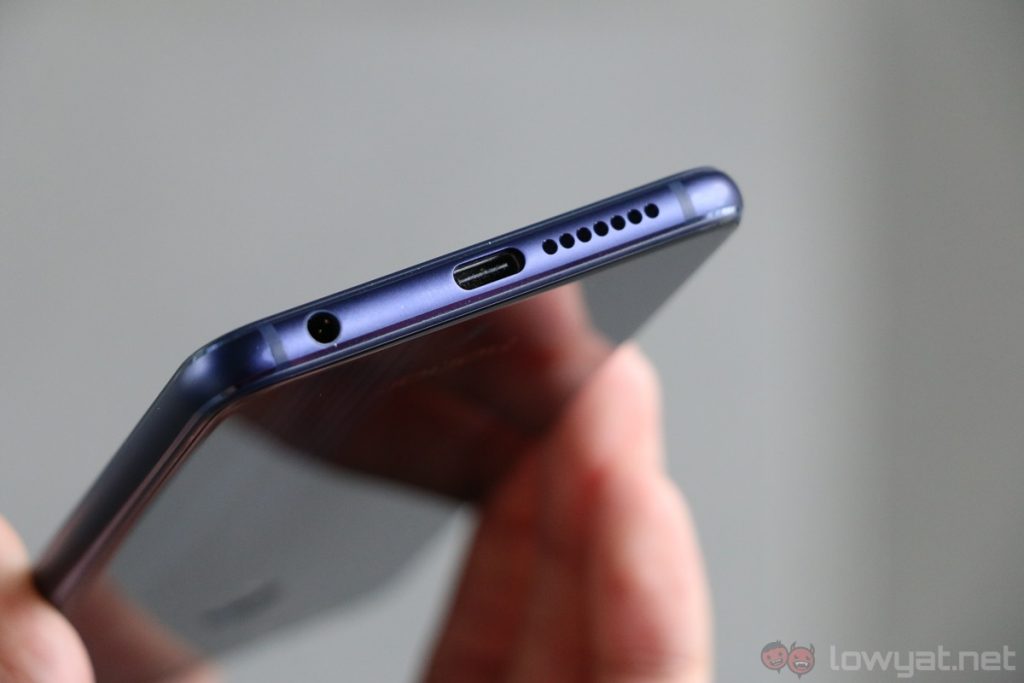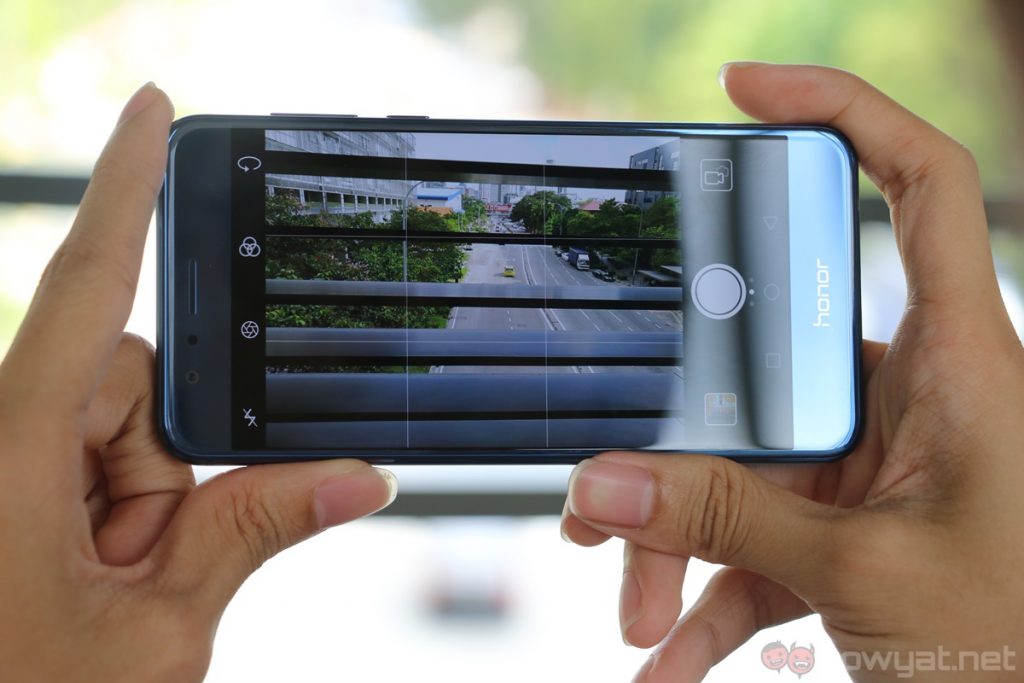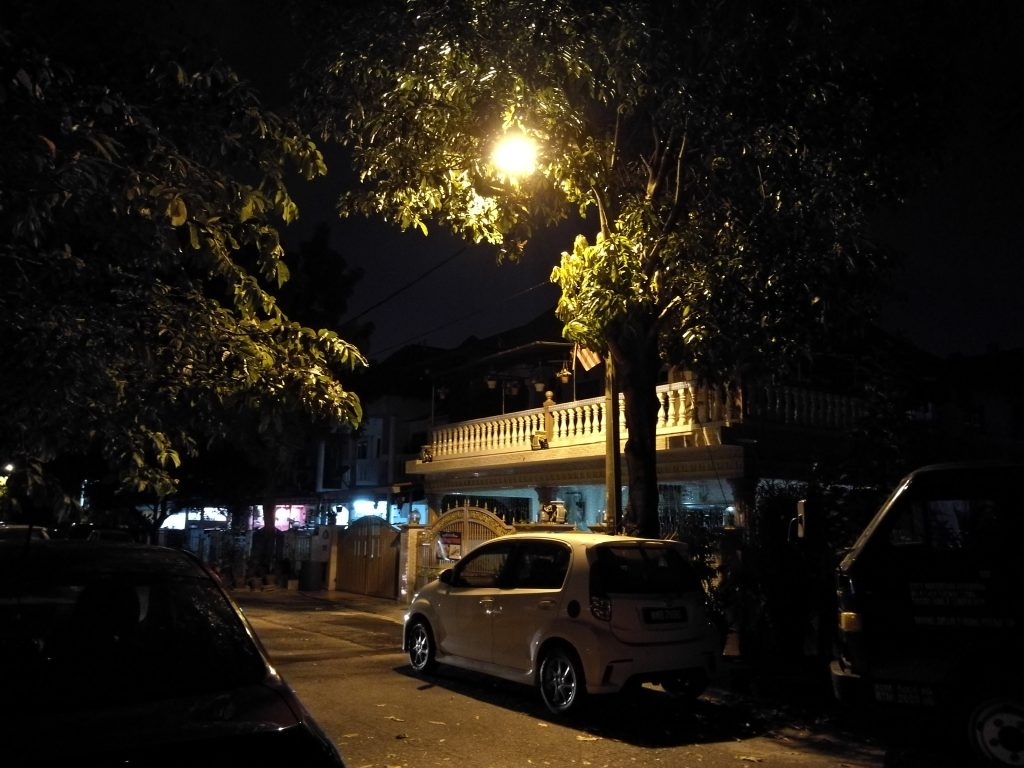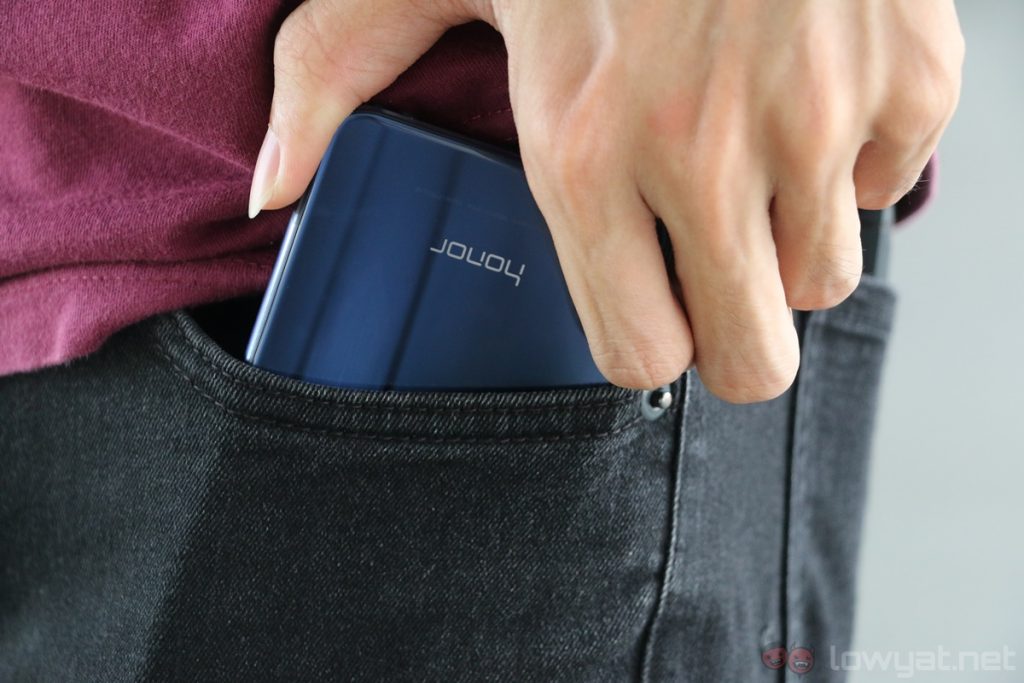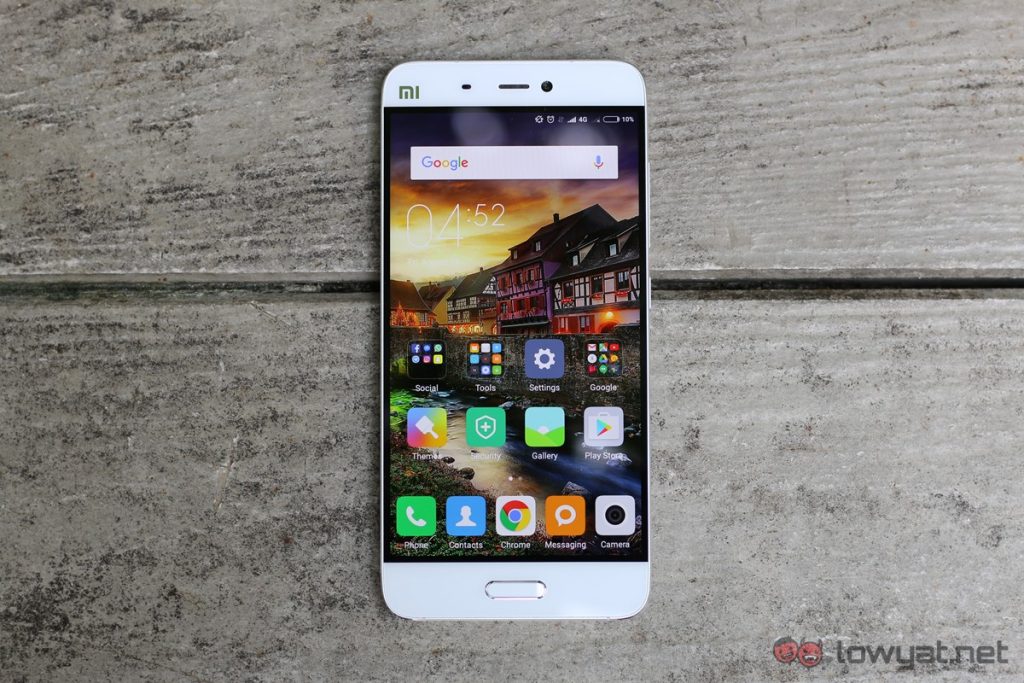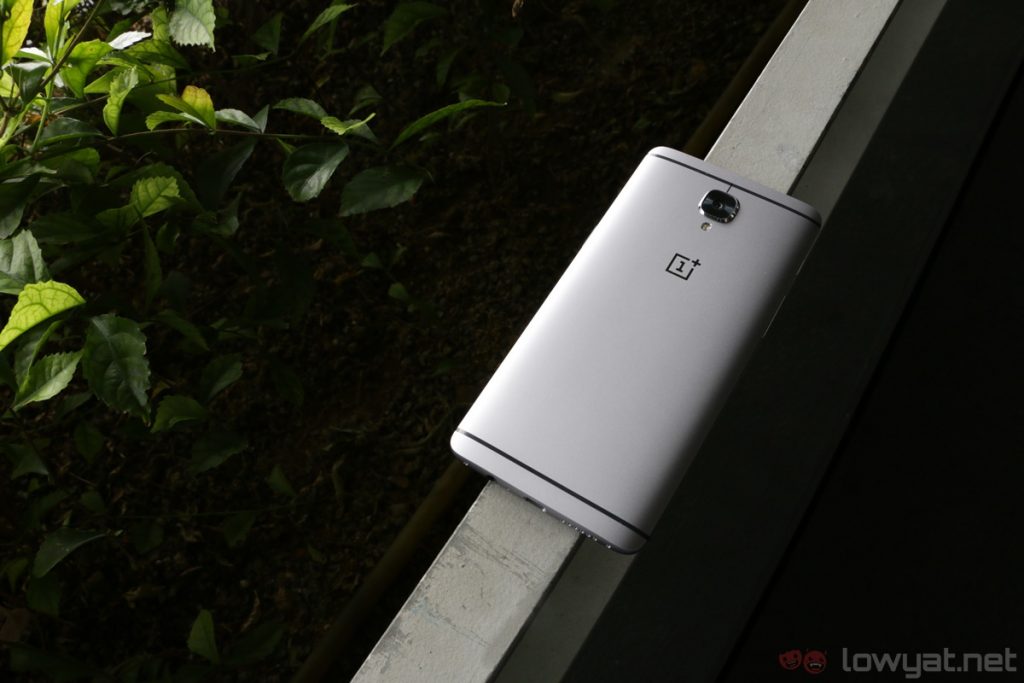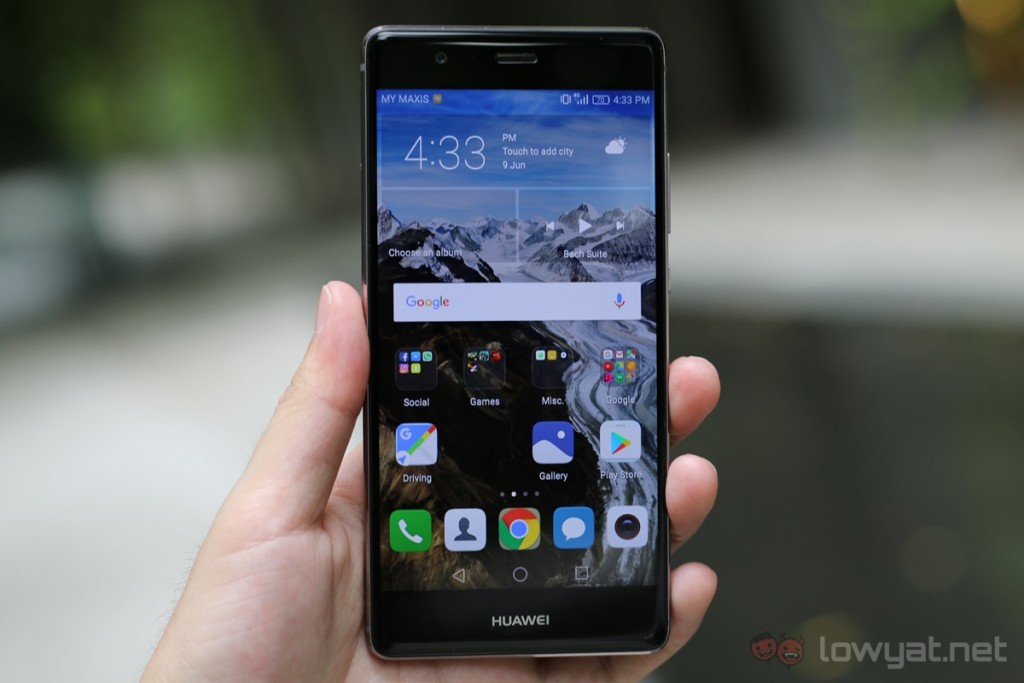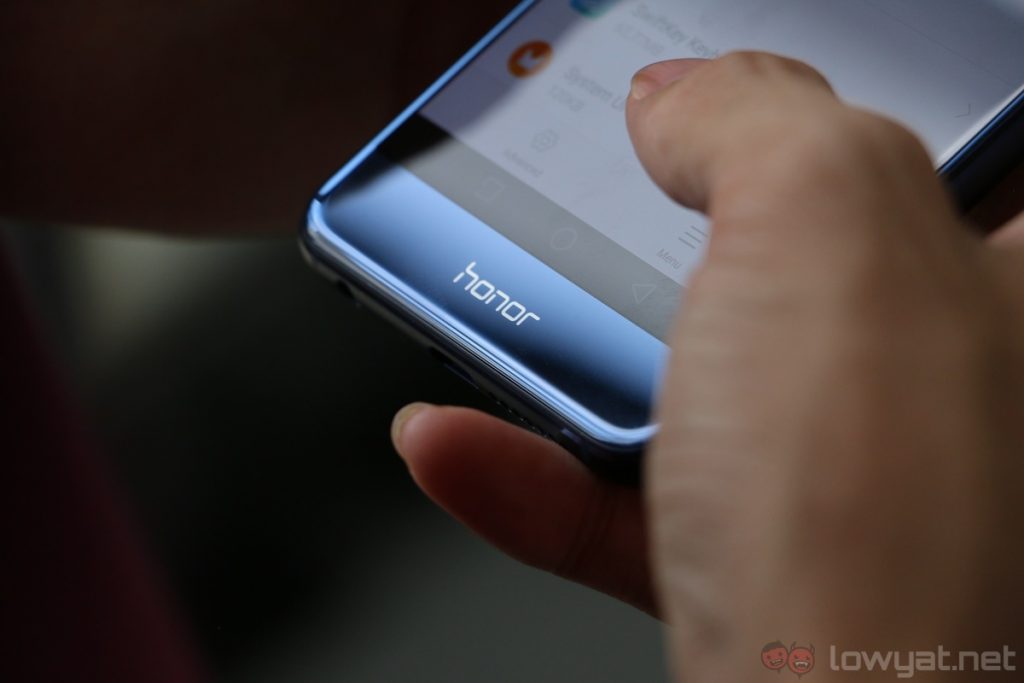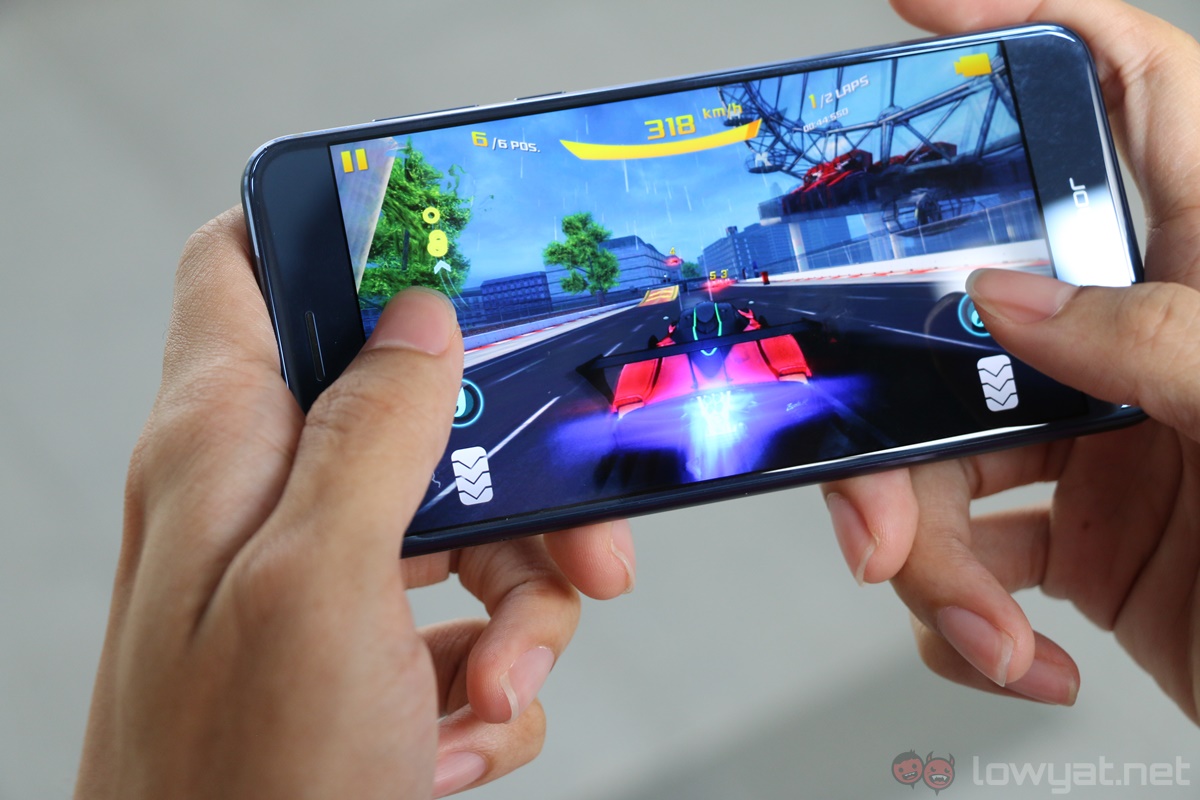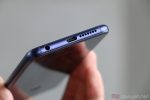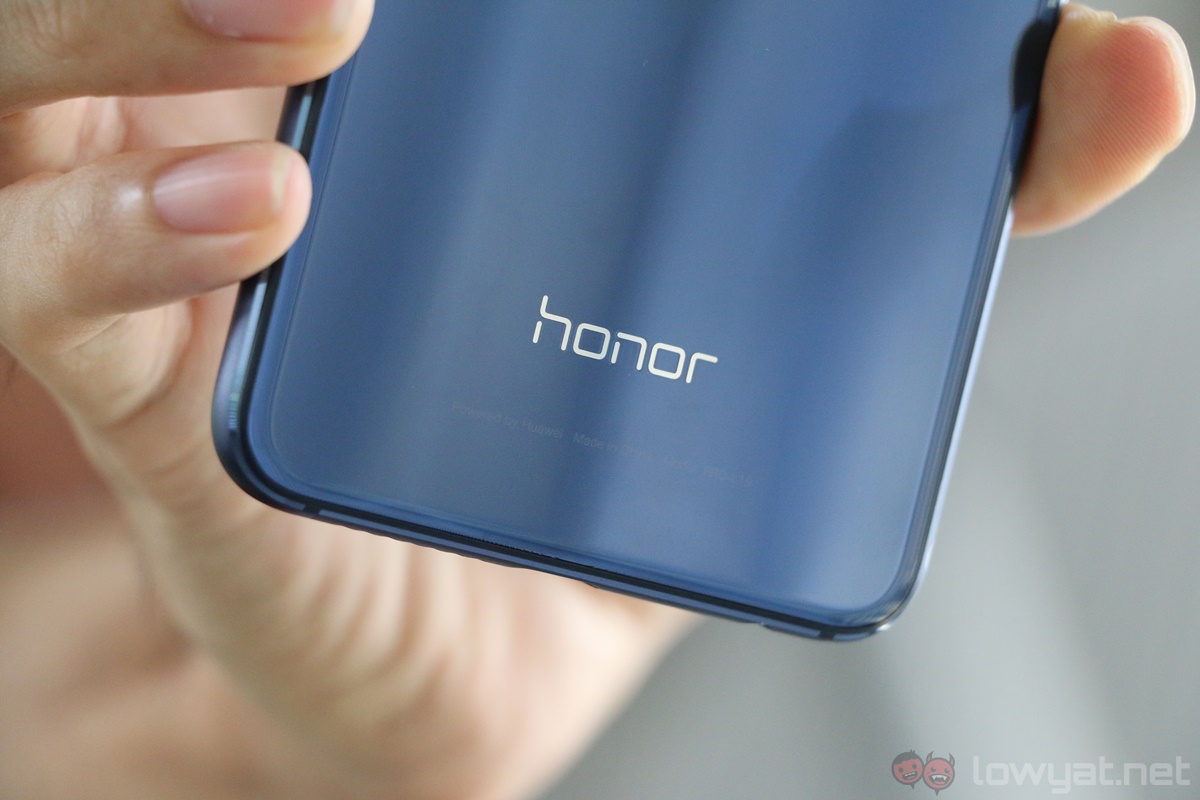In many ways, the honor 8 is a significant upgrade over its predecessor, the honor 7. It is faster, sleeker-looking, and has an interesting dual-camera setup. A similar camera system was first used in the honor 6 Plus, but the honor 8’s camera is far superior; something that I was pleasantly surprised with after using the device for some time.
As yet another entry in the affordable flagship smartphone category, just how does the honor 8 stack up to other big players like Xiaomi’s Mi 5 and the OnePlus 3? Quite simply: it’s a worthy competitor to the latter two. Here is proof that honor has learned quickly when it comes to refinement with the honor 8.
Design & First Impressions
The honor 8 is by far one of the sleekest-looking smartphones in the market right now. The most eye-catching design element is the device’s glass back. honor calls it “Aurora Glass,” and it’s made from 15 layers of glass which refracts light in such a way that is…quite mesmerising to look at. The device as whole also feels very symmetrical, to the point that I always had trouble figuring out which is the front and back of the smartphone whenever I took it out of my pocket.
However, this unique design comes at a cost, and I’m not a big fan of it: the honor 8 feels very, very slippery. The glass panels on the front and back of the device don’t exactly provide good grip, and the matte finish of the honor 8’s metal frame somehow makes it that much more slippery. That being said, I do have to commend the build quality of the device; the honor 8 as a whole feels very solid and premium.
When the honor 8 was initially announced, I wasn’t thrilled at the fact that it lost the very useful Smart Key from the honor 7. That is, until I learned that the rear fingerprint sensor now doubles as the Smart Key. Not only is this implementation more inconspicuous than the honor 7’s Smart Key, it is also very tactile and satisfying to click.
Basically, I can set to open certain apps or functions with three different actions of the Smart Key: a single press of the button, a double press, or a long press. Of course, the fact that the button sits on the back of the honor 8 means that I can’t use it if the device is placed on a surface, but it’s certainly a genuinely useful feature to have.
Also, as is the case with honor smartphones, the fingerprint sensor of the honor 8 is quick to recognise my fingerprint as well.
As a whole, I really dig the premium appearance and feel of the honor 8, although I do wish it was less slippery. Regardless, the honor 8’s design isn’t the only thing that impressed me; other aspects of the device are equally – if not more – impressive as well.
Hardware
The HiSilicon Kirin 950 processor found in the honor 8 may not be as popular or powerful as Qualcomm’s Snapdragon 820 chipset, but it is definitely a capable one. In fact, the devices as a whole feels very, very zippy.
Gaming with the honor 8 was a very enjoyable experience, and overall, I enjoyed using the honor 8 even more than my time with the Xiaomi Mi 5, which felt more sluggish despite packing a Snapdragon 820 processor. I reckon this is thanks to the optimisation of Emotion UI and Kirin 950 chipset of the honor 8.
Another highlight feature of the honor 8 is most definitely the dual-camera system, which is very similar to the one found in the Huawei P9. However, is the honor 8 a capable shooter like the P9? The short answer is: yes, its camera performance definitely impressed me. I’ll explain more in a bit.
Benchmarks
Software
The software experience of Emotion UI 4.1 on the honor 8 isn’t quite as clean as stock Android, but it is by no means bad. I love the fact that I can hide apps that I don’t use by pinching to zoom on the home screen, and other useful Android Marshmallow features like Now on Tap is implemented in EMUI, unlike some Android ROMs.
As is the case with many honor and Huawei smartphones lately, the honor 8 comes with Knuckle Sense as well. Basically, I can draw letters with my knuckle to launch apps associated with a certain letter; I can even double tap on the display – with my knuckle, of course – to take a screenshot. This is by no means a game-changing feature, but it is certainly useful to have in specific situations.
One of my most favourite features of EMUI is how it takes advantage of the rear fingerprint sensor. As I’ve mentioned, the sensor now also doubles as the Smart Key, which is further enhanced with EMUI’s range of useful gestures with the fingerprint sensor. I can swipe down on the sensor to bring down the notification panel, double tap to clear all notifications, and swipe back up to close the panel. Honestly, any smartphone with a rear fingerprint sensor should implement a similar feature: it just makes a lot of sense, not to mention how convenient it is.
Personally, I still prefer stock Android over EMUI on the honor 8, but I have to admit: EMUI is a very, very polished version of Android. It doesn’t have any major issue or bug throughout my time with it (aside from a slightly iffy GPS performance), and I adjusted pretty quickly to it from stock Android.
Battery Life
Although the honor 8 only has a 3,000mAh battery (which isn’t very big by today’s standard), its battery life surprised me quite a bit. With moderate to heavy usage, I managed to get about five hours of screen on time easily on the honor 8; that’s a pretty impressive feat for only a 3,000mAh battery.
Getting through a typical work day with the honor 8 was quite effortless as well. My typical usage scenario involves a lot of web browsing, some Pokemon Go here and there, and tons of instant messaging. All in all, I’m very happy with the honor 8’s battery life.
The fast charging of the honor 8, however, didn’t impress me quite as much. In my testing, the honor 8 was charged up to about 45% within 30 minutes of charging with the charger that came with the device.
Display
Packed with a 5.2-inch 1920 x 1080 LTPS panel, the honor 8’s display is pretty good. Texts and images look sharp on the display, brightness is good, and the colours of the display are quite vibrant as well. Of course, an OLED display has more vibrant colours than the LCD panel of the honor 8, but it’s certainly a pleasant display to look at.
Audio
In this department, the honor 8 performed just like any other smartphones in its class. The bottom-firing mono speaker can get pretty loud, and I didn’t notice any buzzing or crackling from the speaker at maximum volume. Naturally, a front-facing speaker setup would’ve been much better, but I’m glad honor decided to place the speaker on the bottom right of the device instead of the left: I wouldn’t accidentally covered the speaker otherwise when I’m using the device in landscape mode.
Camera
Much like the Huawei P9, the honor 8’s dual-camera setup is made up of two 12MP sensors; one is a conventional RGB one, while the other is a monochrome sensor. Both of these sensors work in tandem: images taken with both sensors are combined to create one image. The result? An impressive smartphone camera.
Images taken with the honor 8 has very punchy and saturated colours, which make for very appealing images, although some may prefer more natural colour reproductions. Other than that, the camera performed admirably when shooting under ideal lighting; I’ll let these images do the talking.
However, it is the low-light performance of a smartphone camera that is the deciding factor as to how good it is. In this respect, I was pleasantly surprised with the honor 8’s camera. It doesn’t exactly have the best low light performance – and the camera gets more sluggish in less than ideal lighting – but the end results are definitely commendable.
While I’m happy with the camera performance of the honor 8, I feel like honor can further improve the device’s camera. The lack of optical image stabilisation makes it quite difficult to get sharp and clear images all the time, and the camera experience isn’t quite as polished as other competitors – there’s still delay in between shots. However, for what it’s worth (and especially for the asking price of the device), the honor 8 is definitely a capable shooter.
Sample Images
Competition
Retailing from RM1,699, the honor 8 is one of the most affordable flagship devices in the market. The only flagship smartphone that’s priced below it is the Xiaomi Mi 5, which is one of its main competition.
In comparison to the most affordable 32GB variant of the honor 8, the Mi 5 costs RM150 less with a RM1,549 price tag. For that kind of money, the Mi 5 has a (theoretically) more capable Snapdragon 820 processor; it also has the same amount of storage at 32GB and a 16MP rear camera with optical image stabilisation. However, it’s worth noting that the Mi 5 does not have a microSD card slot – which the honor 8 has – not to mention the fact that the honor 8 has more RAM at 4GB.
And then there’s the excellent OnePlus 3. Retailing at RM1,888, it costs RM189 more than the base variant of the honor 8. That being said, the 64GB variant of the honor 8 goes for RM1,899, which is very similar to the OnePlus 3’s price tag.
If we look at the specifications of both devices, the OnePlus 3 has the advantage in several aspects: it has a faster Snapdragon 820 processor, more RAM at 6GB, a bigger and more vibrant 5.5-inch AMOLED display, as well as arguably better software experience thanks to the lightweight nature of OxygenOS. However, the honor 8 has a few advantages of its own as well, such as a microSD card slot the OnePlus 3 lacks and a more unique design.
Another noteworthy competition to the honor 8 is none other than its own “unofficial” sibling: the Huawei P9. After all, both smartphones feature a similar dual-camera setup, not to mention the fact that they offer the same software experience. Compared against the highest-end variant of the honor 8, the Huawei P9 has a slightly faster Kirin 955 processor, an all-metal body instead of the honor 8’s glass construction, and a “Leica-certified” camera.
That being said, the honor 8 has more RAM and storage than the Huawei P9 at 4GB and 64GB respectively; this is despite costing only RM1,899, which is RM200 less than the RM2,099 price tag of the latter. Personally, I prefer the Huawei P9’s metal body over the honor 8’s slippery glass back and matte metal frame, although I have to admit: the honor 8 is the sleeker (and arguably more vibrant) looking smartphone of the two.
Conclusion
The honor 8 is another excellent choice when it comes to shopping for an affordable flagship smartphone. It is fast, it looks really good, and it offers plenty value for money. From my time with the honor 8, it’s evident that honor has mastered something many brands are still struggling with: refinement.
honor may have dabbled in the mid-range market for quite a bit with the honor 5X and honor 5C, but the honor 8 shows that the company can truly come up with a commendable flagship smartphone that doesn’t break the bank. The honor 8 may not be the best flagship smartphone money can buy, but it’s certainly one of the prettiest in the market now.
Photography by Terry Bass and Soh Li Jin.
Follow us on Instagram, Facebook, Twitter or Telegram for more updates and breaking news.


